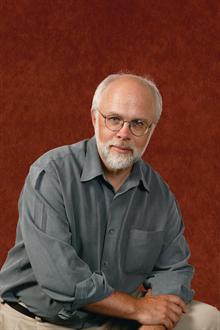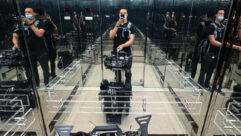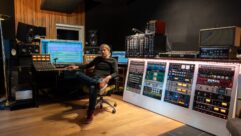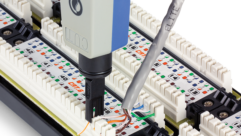

Know Your Worth
What’s your real worth as an AV professional? Hint: You store it between your ears. The sum of your AV education isn’t the classes you take. It’s the trial and error you overcome on job sites.
Thom Mullins
In an information economy, what you know defines your worthmaybe even your longevity in your chosen field. Your 15 minutes of fame can be significantly more or less based on your knowledge, your willingness to learn from experience, and your skill at imparting that knowledge.
That’s why in any fieldbut especially in a field where technology changes so rapidly, such as pro AVongoing education is vital. I’m not necessarily talking about attending SynAudCon, getting your CTS certifications, or even where or whether you went to college. All those can take you far, but they form only a portion of your total educational foundation and thus are only part of what you have to offer.
As a consultant, much of what I have to offer a client is whatever wisdom I’ve gained from my prior experience. When I start a project, I ask myself, “What have I learned before that I can bring to bear on this situationworking for this particular clientto come up with a solution to the challenges they face in communicating?”
The work I do for my employer is considered work for hire. Anything I create in the course of my employment usually belongs to the company I work for and becomes part of a copyrighted compilation of specifications and drawings. (This, of course, is a simplified view of the situation for the purposes of this column. There are caveats and conditions that apply when defining “work for hire,” including whether you’re an employee or contractor.)
While my employer holds the copyright to the material I produce, I retain what is called the “moral right” to that material. Regardless of my employer’s copyright, I know I was the original creator of what is represented on the design page by those funny marks and notations. To paraphrase the late Dick Heyser, a fellow of the Audio Engineering Society and a chief engineer at the Jet Propulsion Lab at the California Institute of Technology: What we think of as math is not really math; it is the remnant of a thought that crossed the page. Real math is done in the mind of the creator.
The same goes for the designs we create as AV consultants. Regardless of whom we work for, or the trajectory of our careers, we carry the knowledge of our work wherever we go. And frankly, we learn more from our mistakes than our successes. If it weren’t for failures, we’d have little to bring to the table but our hunger.
And we don’t just learn from our failures. Training and education, roundtable seminars, and mentoring are all ways we learn from the mistakes of others and gain insight into their knowledge about the systems they’ve designed for others. After all, we don’t have enough time in our lives to learn exclusively from our own mistakes.
THE LESSONS-LEARNED FOLDER
These days when we interview for projects (which happens more often than you might think), we’re often asked about our experience as it applies to that particular client and that particular project. The interviewer often wants to know about our knowledge of specific types of AV marketshealth care, higher education, corporate, or entertainment. As I sit in those interviews, I’m rifling through a “lessons-learned” folder I keep in my headmistakes and successes that apply to the situation before me. The bigger the folder, the more value that my firm and I can deliver. It’s not only filled with knowledge of AV systems, but also of processes, procedures, and the way trades work together (or not) on similar projects.
For instance, as the AV industry merges with information technology, we are learning how IT companiestypically manufacturers—work with their clients, and how those clients write contracts to protect themselves. This is one of the unintended consequences of convergent technologies. If a device can be networked and requires software to setup or operate, we can find ourselves in an uncomfortable position of having to acquiesce to the contract demands of an IT department that may not be advantageous to the typical AV contracting firm.
So, we find ourselves dealing with a different type of client than we’re used to. These clients are sometimes more sophisticated than us when it comes to contract language for software licensing, ownership and transfer of intellectual property rights, perpetual usage, and the ability to re-create or duplicate software. As AV and IT continue to merge, we could find ourselves subject to contracts written specifically for IT products and services that have no application in the AV world.
That doesn’t have to be the case. We should read those contracts carefully. Check them against our lessons-learned folder, and see how they differ from contracts we’ve worked under successfully in the past. Then, in spite of the extra effort it might take, and because we value our relationship with our clients, we should work with them to craft a contract that provides them with what they need and allows us to stay in business.
This brings value to the client and to us, but it often isn’t seen as part of our value-added services. We take on the design or implementation of integrated AV systems because we understand there is value in simplifying our clients’ lives with systems that operate seamlessly and intuitively. Beyond that, we need to be able to show our value by making them aware of roadblocks they unknowingly place in their own paths. For instance, they might demand the source code or perpetual usage for a program, not realizing we’re unable to deliver on those demands because it could violate our agreements with manufacturers and suppliers. Clients come to trust what we tell them because we keep the bigger picture in mind. Of all the trades on a project, the AV pro usually maintains the biggest lessons-learned folder.
Knowledge is power. As our industry evolves, it’s what we know that will make us invaluable. Our experience and persistence will bring value to employers and clients. That’s value without measure.
Thom Mullins is a senior consultant with Affiliated Engineers NW in Seattle.










